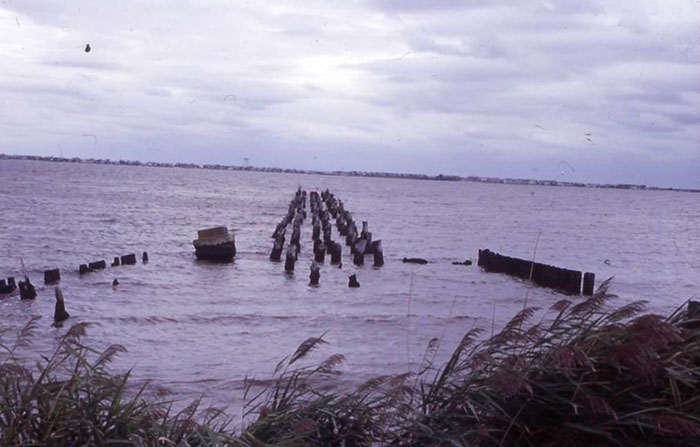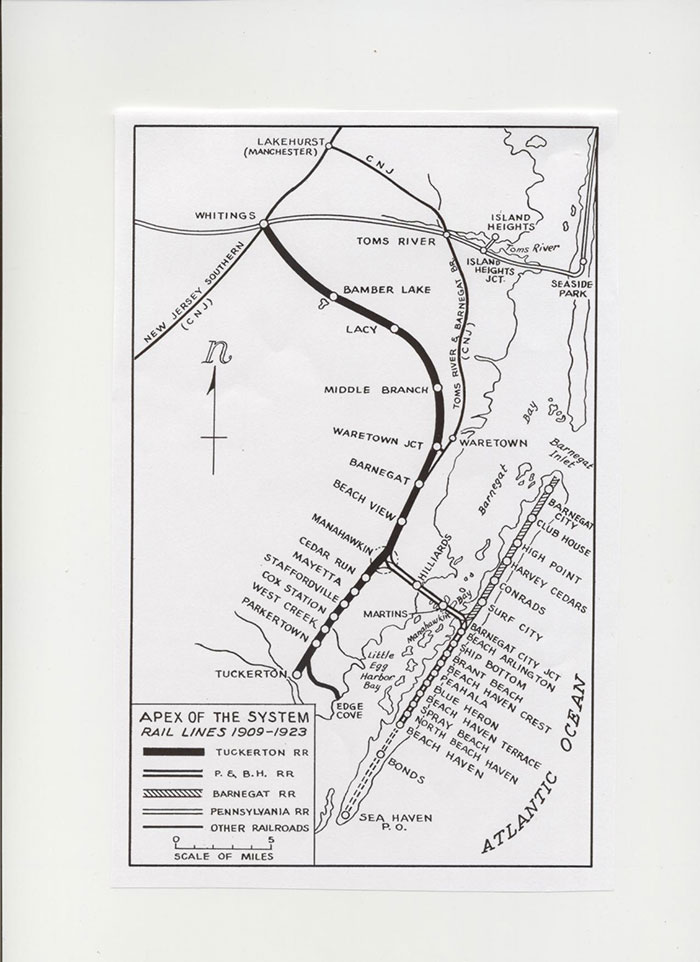
POINT PLEASANT BEACH – Ocean County has a rich railroading history, partly due to its close proximity to New York City and Philadelphia. At one time, three lines operated here, and there are still some remnants of you know where to look.
German Georgieff, Chief Naturalist at Wells Mills County Park in Waretown hosted a special “Railroads of Ocean County” presentation at the Point Pleasant Beach Library which was attended by about two dozen railroad buffs.

Avid model train fans are called “rivet counters” because no model is accurate enough for them, Georgieff joked, sometimes correcting historic images of trains that have the wrong number of windows, incorrect paint schemes and more, he said.
The railroad was important to the growth of Ocean County, he said. After the Civil War, coastal towns had rich natural resources but small populations. Local hunters and fishermen had no way of getting their goods to bigger markets unless they salted or preserved their catch.
Once the railroads arrived, goods could be shipped after being packed in ice, and locals were able to make a very good living, Georgieff said.

Very few working class people could make the journey to the shore, but once the railroads started running, they could take day trips, which helped the tourism business take off, he said.
The three railroads were the Tuckerton Railroad, the Pennsylvania Railroad (a subsidiary of the Philadelphia/Long Branch Railroad), and the New Jersey Central Railroad (which started out as the Raritan/Delaware Bay, then New Jersey Southern, then Central Railroad of New Jersey, and lastly Conrail, which went out of business in 1999).
The Tuckerton Railroad operated in New Jersey from 1871 until 1936. Initially the train ran a short track including West Creek, Manahawkin, Barnegat, Beach Haven and Whiting. Track was built past Tuckerton station to the waterfront at Edge Cove to connect with steamships that took vacationers to Long Beach Island.
The three major railroads intersected in Whiting. Tuckerton Railroad was later expanded with tracks connecting to New York, Trenton and Philadelphia.
The Pennsylvania Railroad started in Camden at a ferry crossing, went east across the state, crossed the bay at Ocean Gate to Seaside Park where it went north to Bay Head.

The New Jersey Central Railroad had origins in the 1830s and inaugurated the Blue Comet, a deluxe that offered first class service at coach rates that ran from Jersey City to Atlantic City. The Blue Comet operated from 1929 until 1941 and was so popular, a toymaker from New York named Joshua Lionel Cohen made models of the iconic train.
The history of trains in Ocean County is everywhere.

“Anytime you see an abnormally straight dirt road, that could be an old railroad bed,” Georgieff said. “When you see roads like Station Drive and Railroad Avenue, like in Forked River, that’s also a sign that trains ran there.”
Route 72 in Manahawkin was built over railroad tracks, as was Route 35 on the barrier island, he said.
The Rail Trail in Barnegat Township is a 15.6-mile abandoned rail corridor that extends to Toms River. The trail was built on the former roadbed of the Central Railroad of New Jersey.

At one time, passenger rail service was available throughout New Jersey, but after the switch to cars following World War II, riding trains fell out of favor, revenues fell, service was reduced and the equipment deteriorated. Many lines tried to merge, but ultimately most declared bankruptcy.






